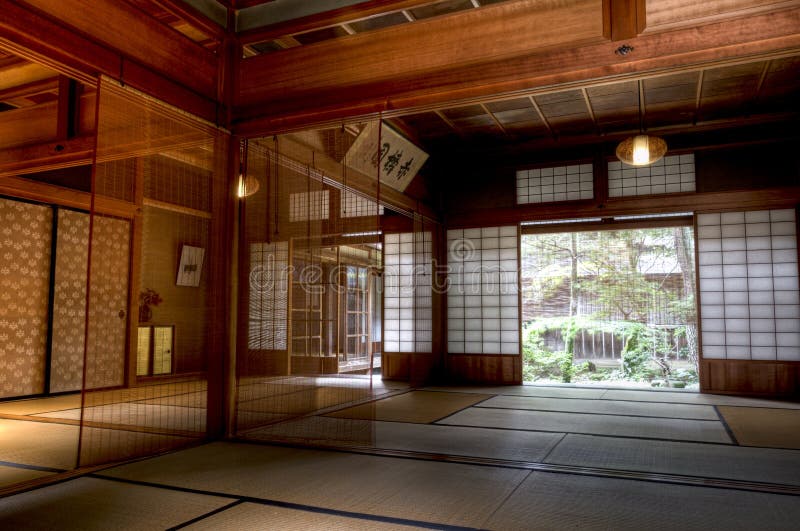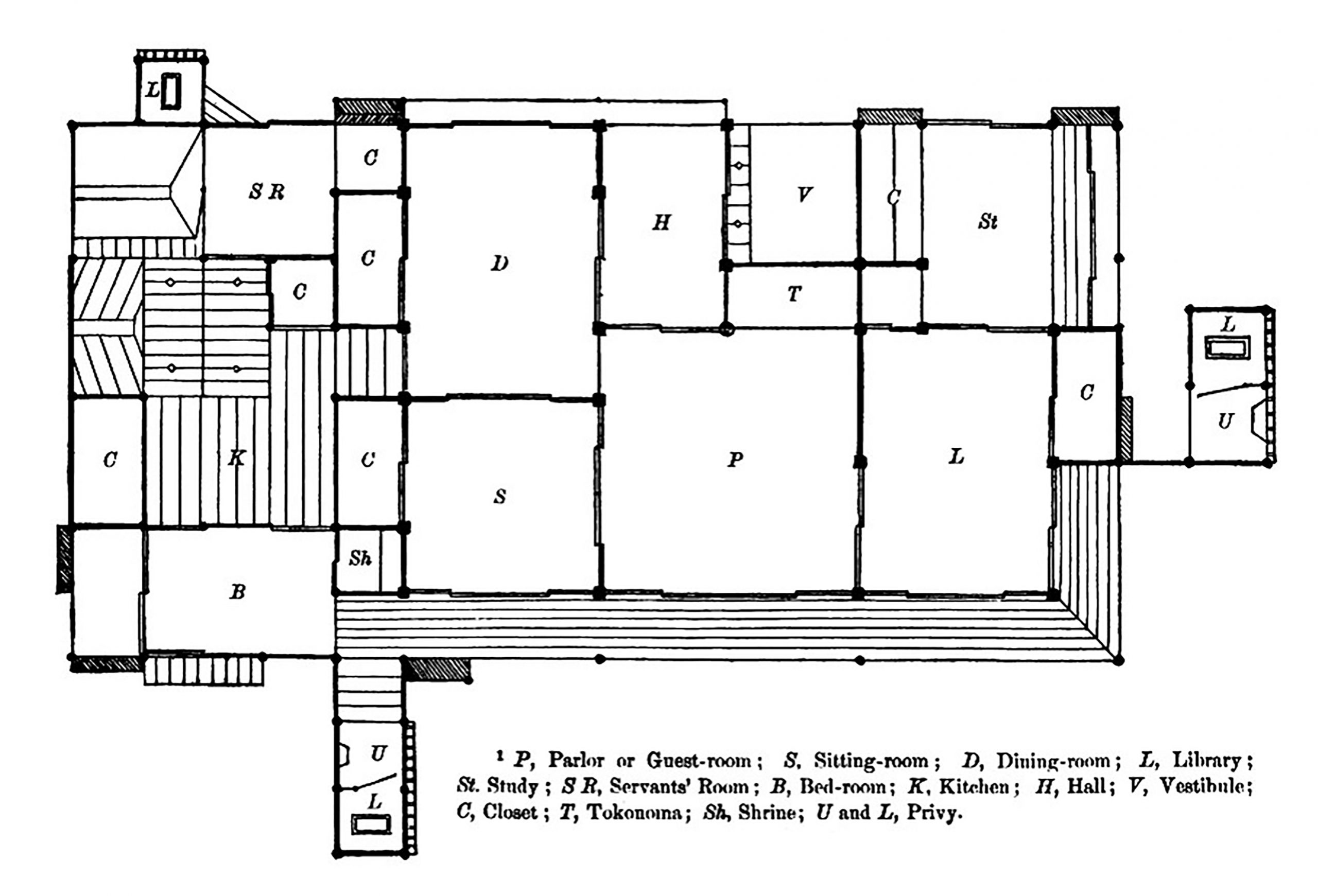Edo Period Traditional Japanese House Plans Minka as the Japanese call them are traditional Japanese houses characterized by tatami floors sliding doors and wooden verandas The minka floor plans are categorized in two ways the kyoma method and the inakama method The kyoma method uses standard tatami mats as measurement while the inakama method focuses on column spacing
A gassh zukuri styled minka home in Shirakawa village Gifu Prefecture Minka Japanese lit house of the people are vernacular houses constructed in any one of several traditional Japanese building styles In the context of the four divisions of society Minka were the dwellings of farmers artisans and merchants i e the three non samurai castes The Edo period the 17th to mid 19th centuries greatly shaped Japanese architecture Simple dignified and beautiful the structures created during this time can even be seen today inspiring architecture around the world While Japanese architecture was greatly influenced by the Chinese the differences in their styles are vast
Edo Period Traditional Japanese House Plans

Edo Period Traditional Japanese House Plans
https://i.pinimg.com/originals/e8/b8/b5/e8b8b5e554f6324d8033c4fdbf360e71.jpg

Traditional Japanese House Floor Plans Traditional Japanese Architecture Asian Hous Japanese
https://i.pinimg.com/originals/90/1d/f8/901df844c6605af3369955b9c800dc41.jpg

Pin On Floor Plan Fanatic
https://i.pinimg.com/originals/f6/b2/39/f6b239daeb7df8fc9f718b51e43ab2a4.jpg
Minka The iconic farmhouse of Japan In the late spring I read Azby Brown s Just Enough a book that details the life of peasants city dwellers and samurai during the Edo period of Japan Brown s observations led him to conclude that society was much better equipped and much more ecologically minded and conservative meaning not The traditional house of ancient and medieval Japan 1185 1606 CE is one of the most distinctive contributions that country has made to world architecture While the rich and powerful might have lived in castles and villas and the poor lived in rustic country houses or cramped suburban quarters a large number of medieval Japanese in between lived in what became the quintessential Japanese home
The earliest kominka homes were built over 300 years ago and can be traced back as far as the Edo period 1603 1868 Both practical and beautiful traditional Japanese houses were built in towns and villages throughout Japan Often located in rural or mountainous regions of Japan these marvels of traditional Japanese architecture were 5 Box The box is similar to the inverted U except instead of two free standing U shapes they are connected to each other for more support Japanese house style 6 Umbrella The umbrella style has one vertical central post in the middle of the house and 4 horizontal beams that extend outwards from that post
More picture related to Edo Period Traditional Japanese House Plans

Traditional Nuance For Japanese Interior Design With Calm Wall Paint And Nice Shelf Japanese
https://i.pinimg.com/originals/3e/99/23/3e992314df489f961a7eb827d0647d24.jpg

Japanese Architecture In The Edo Period Big House
https://i.pinimg.com/originals/6d/0f/ea/6d0feaa720b3e17480d91a536e65baa5.jpg

Edo Period Traditional Japanese House Plans The Political Entity Of This Period Was The
https://thumbs.dreamstime.com/b/traditional-japanese-edo-period-merchant-house-room-takayama-46524827.jpg
Every dimension in a Japanese house relates to the module of a tatami mat 4 Traditional Japanese houses have a special relationship with nature In extreme cases the best part of a lot was given over to the garden and the house design on the land left over Entire shoji walls can be pushed aside creating an intimate unity with the garden 1 Open Air Museum of Old Japanese Farm Houses 1 2 Hattori ryokuchi Toyonaka Osaka Open 9 30am 5pm last entry 4 30pm Closed Mon Tues if Mon falls on a national holiday Access 30 minute walk from Ryokuchi Koen Station on the Kita Osaka Kyuko Railway connection via Osaka Metro Midosuji Line or from Sone Station on the Hankyu Railway
The Tokugawa or Edo period At the death of the Momoyama leader Toyotomi Hideyoshi in 1598 his five year old son Hideyori inherited nominal rule but true power was held by Hideyoshi s counselors among whom Tokugawa Ieyasu 1543 1616 was the most prominent Ieyasu assumed the title of shogun in 1603 and the de facto seat of government was moved from Ky to to his headquarters in Ancient Japanese Buildings Kofun burial mounds are among the most representative structures of Japanese architecture until the 8th century Kofun means ancient grave and between the 3rd and 7th

42 Edo Period Traditional Japanese House Plans
https://i.pinimg.com/originals/d6/76/a5/d676a594996c210e4a63734045f057c7.jpg
42 Edo Period Traditional Japanese House Plans
https://lh6.googleusercontent.com/proxy/wOz3Qjome6zY-pZ1juZXTJoXsU1bppFfxSIuebZjqUJsBiQxtqgoKVYP4Vmjlyy6MPOw0SjMvTH38vpJvzJ2xXaXa5cWRnPgKjVy=w1200-h630-p-k-no-nu

https://upgradedhome.com/traditional-japanese-house-floor-plans/
Minka as the Japanese call them are traditional Japanese houses characterized by tatami floors sliding doors and wooden verandas The minka floor plans are categorized in two ways the kyoma method and the inakama method The kyoma method uses standard tatami mats as measurement while the inakama method focuses on column spacing

https://en.wikipedia.org/wiki/Minka
A gassh zukuri styled minka home in Shirakawa village Gifu Prefecture Minka Japanese lit house of the people are vernacular houses constructed in any one of several traditional Japanese building styles In the context of the four divisions of society Minka were the dwellings of farmers artisans and merchants i e the three non samurai castes

Japanese Style House Plan Inspirational Japanese Style House Plans Elegant Japanese Style House

42 Edo Period Traditional Japanese House Plans

Hidden Architecture Interior Architecture Of Vernacular Japanese Home Hidden Architecture

Muromachi Period Chinese Mythology Edo Period Snow Queen Japanese Structures House Result

Edo Period Japanese Houses At The Mountain Outpost Taisho Period Edo Period Japanese Pics

14 Traditional Japanese Towns That Still Feel Like They re In The Edo Period Tokyo Weekender

14 Traditional Japanese Towns That Still Feel Like They re In The Edo Period Tokyo Weekender

42 Edo Period Traditional Japanese House Plans

42 Edo Period Traditional Japanese House Plans

20 Traditional Japanese House Plans With Courtyard
Edo Period Traditional Japanese House Plans - The Edo period 1603 1867 is often considered the era from which traditional Japanese architecture is derived The preceding Sengoku warring states period 1467 1615 had been chaotic By contrast the following Edo or Tokugawa period had a highly homogenised and stable feudal system under the military dictatorship